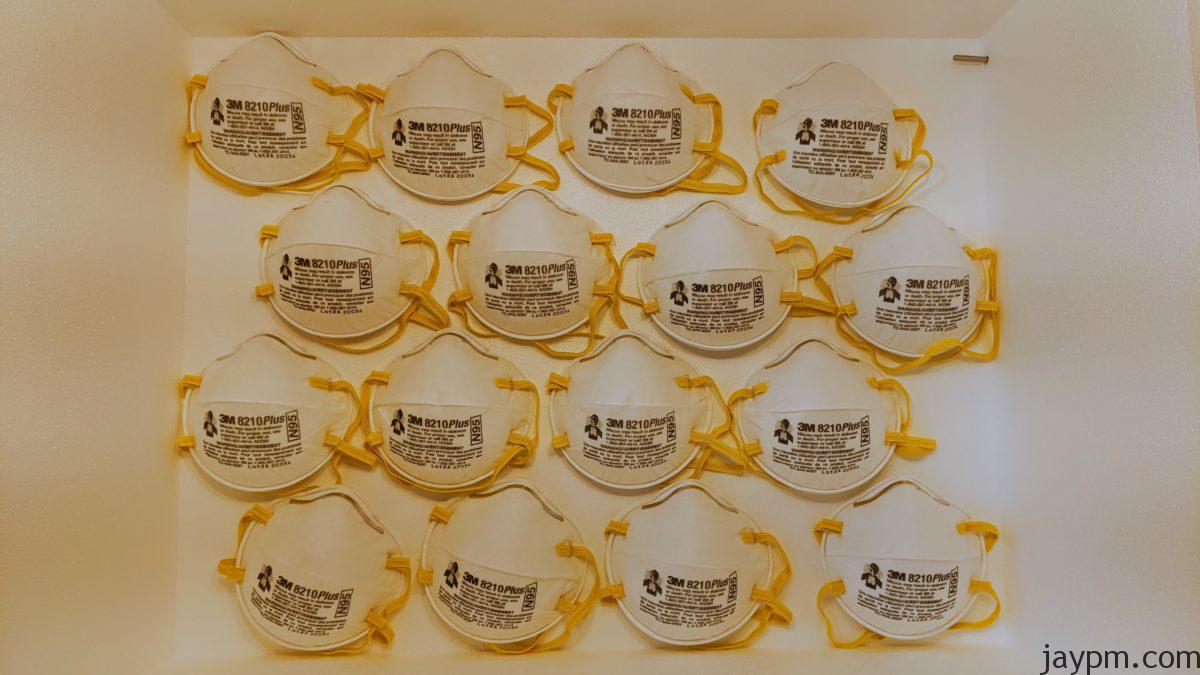In a time when N95 masks are extremely scarce and are difficult to obtain and while healthcare providers have no choice but to reuse masks, makers are stepping up and are trying to fill the gap.
For about $120 USD worth of parts such as a styrofoam shipping box, lightbulbs, and a thermostat with a sensor, I’ve built a heater for N95 masks. This device uses the “dry heat” technique, providing high and consistent heat, out of easily obtainable, off-the-shelf parts.
Disclaimer and Background
I am not a doctor. I am not a scientist. I am not providing official guidance and I do not represent any organization or government in any capacity. I am a software engineer and I write code for a living, which affords me almost no medical knowledge whatsoever. I offer no guarantee of any effectiveness.
Any information presented here may be based on incorrect or unproven assumptions. This site may include information that is already outdated or determined to be just flat-out wrong, especially as more time advances. This was written during the middle of a coronavirus pandemic and the luxury of hindsight to identify the proper paths we should have taken has not yet been afforded to us.
This was inspired by the Make: Plan C initiative, in an attempt to provide not government (“Plan A”), not industry (“Plan B”), but civic (“Plan C”) action to help answer the call, written in the spirit of trying to help by disseminating knowledge in a fast-paced and changing landscape.
This is not my invention, only an interpretation from others ideas I’ve seen online. I was most inspired by Hackerfarm’s article, “HOWTO: LOW COST HEAT STERILIZER FOR VIRUS INACTIVATION.” (Thank you.)
According to practically everyone, including myself, it is believed N95 masks must not be reused and any method to “sanitize” them can lead to degradation and mask failure. Doing so could lead to a false sense of security, their use could be dangerous and could unfortunately lead to death.
Care must be taken when handling used masks and techniques to minimize virus transmission must be used, such as using gloves and bags.
Operation of this device may cause electrocution or start a fire and thus must only be operated by an adult under constant supervision with a fire extinguisher readily handy.
The “dry heat” technique used here will not effectively kill all viruses, bacteria, molds, or fungi. As such, this will not completely sanitize masks.
In addition to the dry heat technique, there are many other methods that researchers are actively testing and validating, including ultraviolet light and vaporized hydrogen peroxide. These may be more effective (yet likely more expensive) than using dry heat.
Please use perform your own research, use your own judgment and make informed decisions from multiple, official sources.
Please use at your own risk.
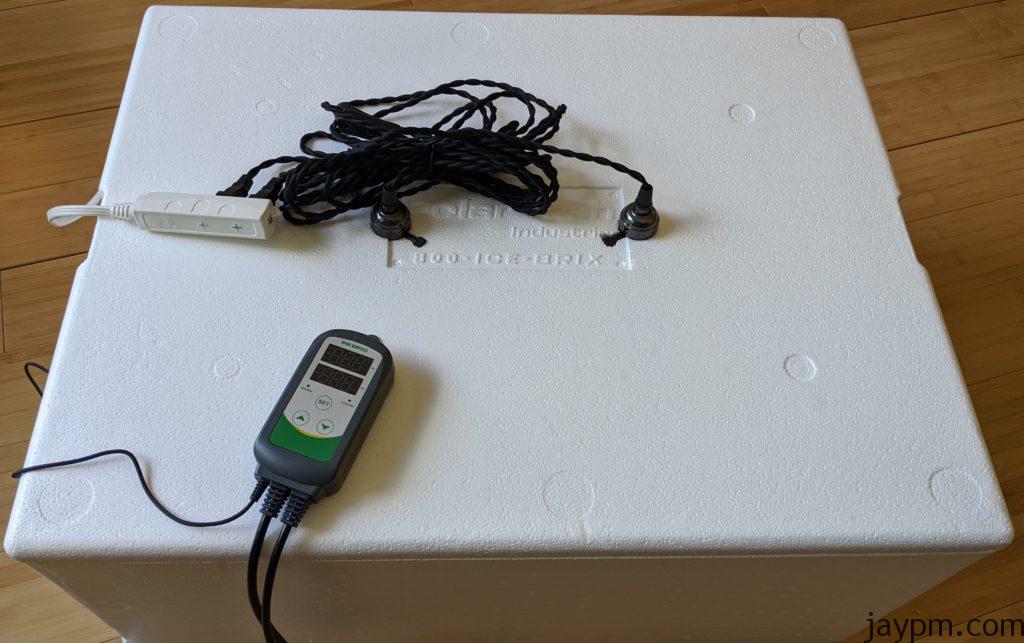
Parts List
- Styrofoam box:
Polar Tech 271C Thermo Chill Insulated Carton with Foam Shipper, Extra Large, 26″ Length x 19-3/8″ Width x 10-1/2″ Depth - Thermostat with sensor:
Inkbird ITC-308 Digital Temperature Controller 2-Stage Outlet Thermostat Heating and Cooling Mode 110V 10A 1100W - Lamp sockets (using only 2 out of the 3):
FadimiKoo E26/E27 Lamp Socket, 3 Pack - Bulbs (buy extra in case damaged during shipping):
Satco 72 Watt (100 Watt) 1490 Lumens A19 Halogen Warm White 3000K Clear Light Bulb, 2-Pack - AC outlet splitter to use one outlet for two lights:
Cablelera Power Cord Extension and Splitter, NEMA 5-15P to NEMA 5-15R x 2, 16 AWG, 13A, 125V (ZWACPQAG-14) - [Future Version] Aluminum foil to insulate the inside:
Reynolds Wrap Heavy Duty Aluminum Foil, 75 Sq Feet
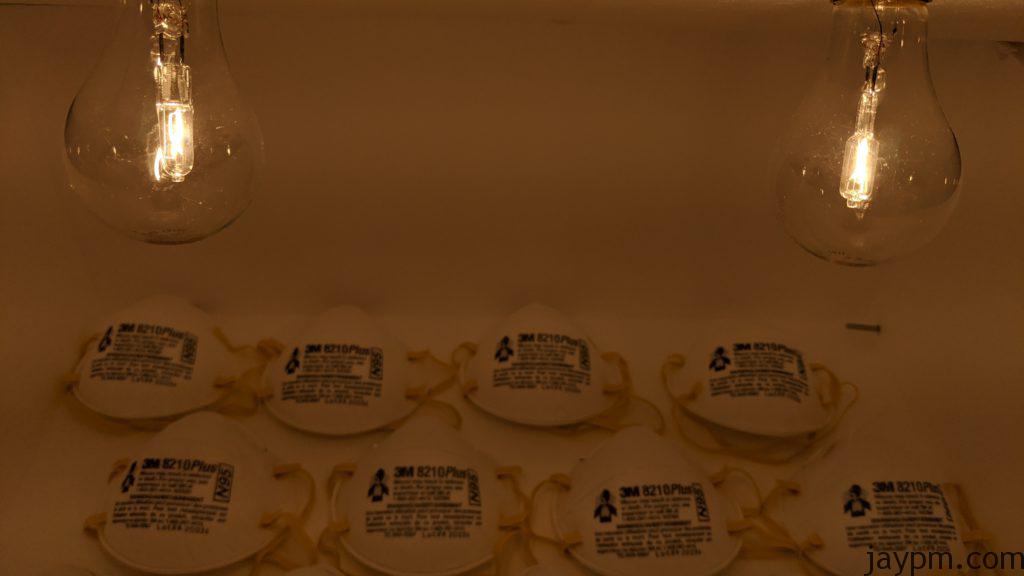
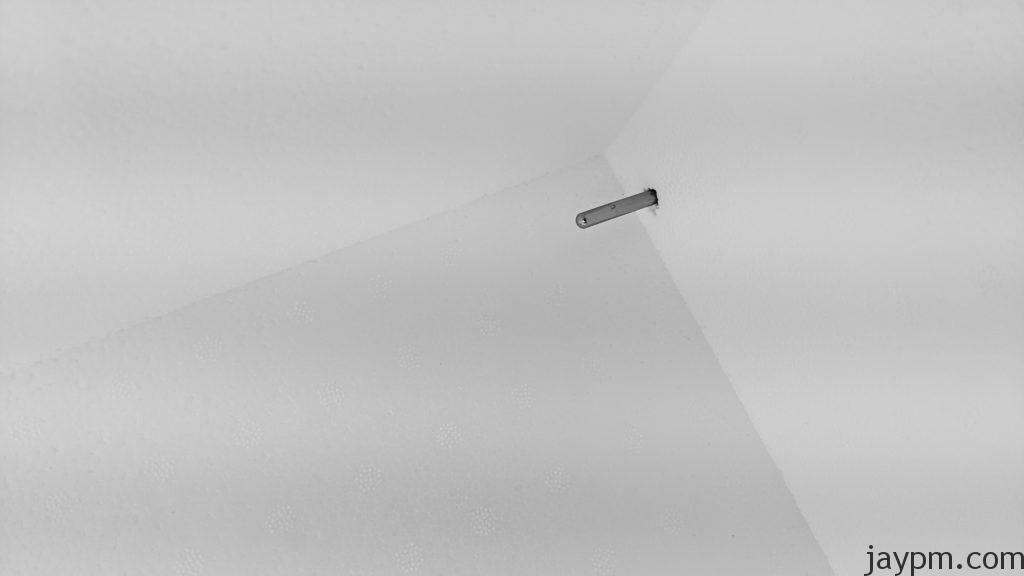
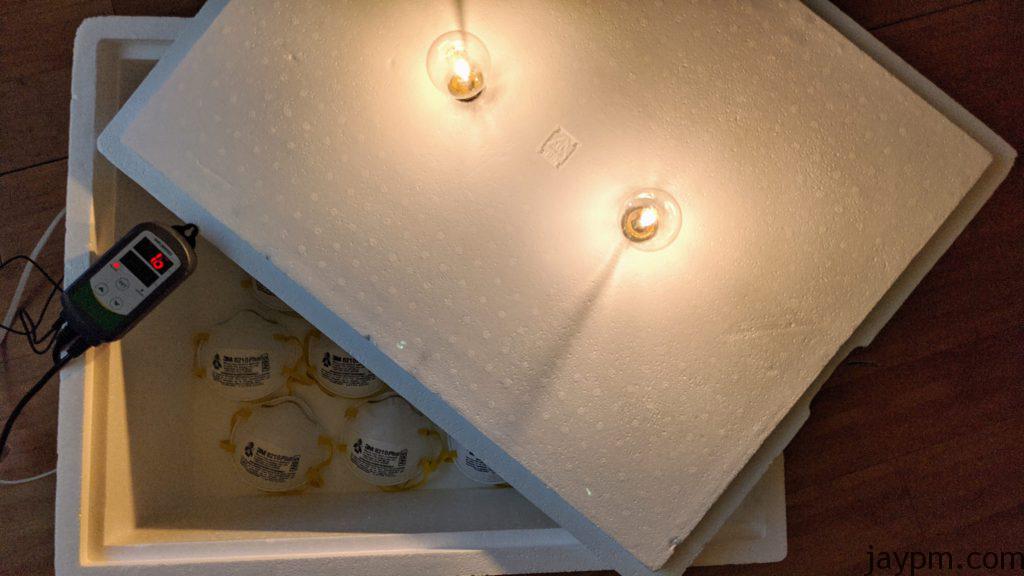
Operation
Based on the findings of this study, masks were heated to at least 70° Celsius (158° Fahrenheit) for a minimum of 60 minutes.
References and Further Reading
These links were used to research this article. I do not have any affiliation with any of these sites or organizations and cannot attest to their their accuracy or motives. Please also perform your own research outside this list, as this is nowhere near definitive or authoritative.
- https://www.nih.gov/news-events/news-releases/nih-study-validates-decontamination-methods-re-use-n95-respirators
- https://www.cdc.gov/coronavirus/2019-ncov/hcp/respirators-strategy/index.html
- https://www.sciencedirect.com/science/article/pii/S2666524720300033
- https://www.medrxiv.org/content/10.1101/2020.04.11.20062018v2
- https://www.wbur.org/commonhealth/2020/04/16/cornavirus-nih-fda-cleaning-n95-masks
- https://www.livescience.com/sanitizing-medical-masks-for-reuse-coronavirus.html
- https://www.cpac.com/decontaimation-of-n95-respirators-using-rapidheat-rh-n95-high-velocity-hot-air-technology/
- https://news.stonybrook.edu/sb_medicine/dry-heat-ovens-can-effectively-disinfect-n95-masks/
- https://makezine.com/2020/03/30/plan-c-crisis-mode-for-covid-19/
- https://www.n95decon.org/heat
Stay safe out there. We’ll get through this.
If you made one yourself, please drop me a line and let me know!
